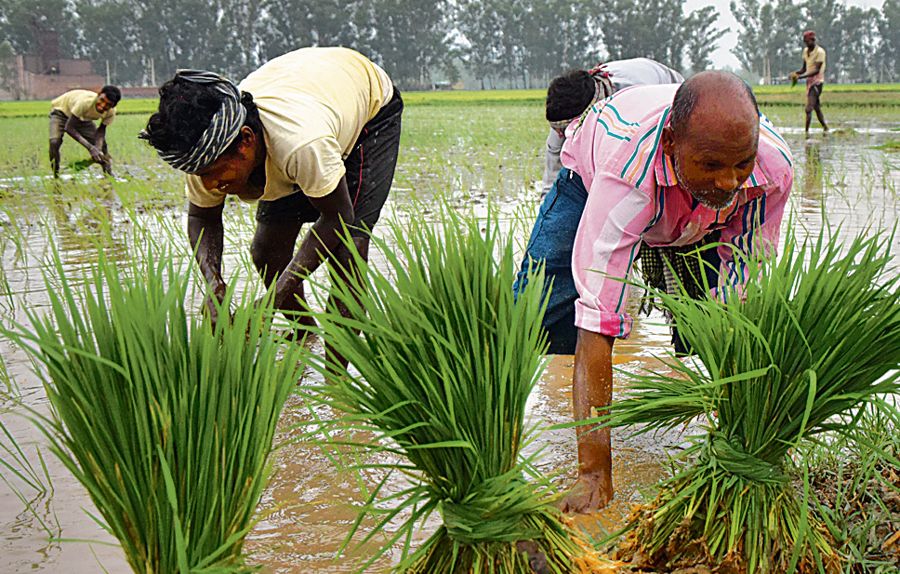
Ruchika M Khanna
Tribune News Service
Chandigarh, July 12
The amount of debt of an agricultural labour household in Punjab has increased by 61.36 per cent in the past 30 years.
Most of the debt taken by agricultural labourers is from non-institutional sources, mainly because they do not have access to institutional sources of finance. These labourers are paying an interest of 20.6 per cent on these loans, taken from their respective landlords or employers. This interest rate is double the rate charged by the institutional sources of finance, such as banks (10.2 per cent).
‘Money lenders charging double interest’
The rate of interest charged by institutional sources of finance declined from 13.75 per cent to 10.2 per cent in the study period. The interest charged by private money lenders and landlords is as high as 20.6 per cent. — Sukhpal Singh, Agro-Economist from PAU, Ludhiana
This vulnerability of farm labourers to financial exploitation and misery is pointed out in a study “Punjab’s Agricultural Labourers in Transition”, conducted by agro-economist Sukhpal Singh, from the Punjab Agricultural University, Ludhiana, and Shruti Bhogal, from Centres for International Projects Trust, New Delhi. The study, spanning three decades (from 1987-88 to 2018-19), is significant, considering high suicide rate among farm labourers.
Sukhpal was among the handful of economists who had earlier recorded the suicides by farmers and farm labourers in Punjab because of high indebtedness. During 2000-18, of 7,300 suicides by farm labourers recorded in Punjab, 5,765 suicides (78.97 per cent) were because of high indebtedness. Among these, 14 per cent labourers were female, as compared to 8 per cent of women victims among farmers.
The study points out how, in spite of the proportion of indebted households declining from 89 per cent (1986-87) to 81 per cent (2018-19), because of shift of workforce from farm to non-farm, the amount of debt increased from Rs 5,769 to Rs 10,096 per farm labourer household. It also points out that debt from non-institutional sources (mainly landlords or employers) has increased from 72.4 per cent in 1987-88, to 89.89 per cent in 2018-19.
Sukhpal said: “Over the time, government intervention in providing financial and physical assistance through schemes like Marginal Farmers and Agricultural Labourers Scheme and Training of Rural Youth for Self Employment, has declined, leading to their dependence on non-institutional sources of credit. The rate of interest charged by institutional sources of finance declined from 13.75 per cent to 10.2 per cent in the 30-year study period, and that charged by the private money lenders and landlords declined from 24.9 to 20.6 per cent. But it is still double than what is charged by banks.”
Interestingly, the government has doubled the credit to the farm sector since 2005, but labourers are still deprived of loans from institutional sources. “This points to the vulnerability to financial exploitation and misery, which is vicious in nature. Loans taken by labourers are mainly for consumption purposes (food, daily expenses, health care and socio- religious celebrations). Though there has been a transition in labourers’ work — from farm to non-farm activities — these families could not come out of the debt trap,” the study says.
The study also points out how a sizeable portion of farm labourer has shifted to non-farm activities between 1987-88 and 2018-19 (14.92 per cent towards industrial labour, 9.39 per cent to construction and 9.94 per cent towards shops).
Join Whatsapp Channel of The Tribune for latest updates.



























